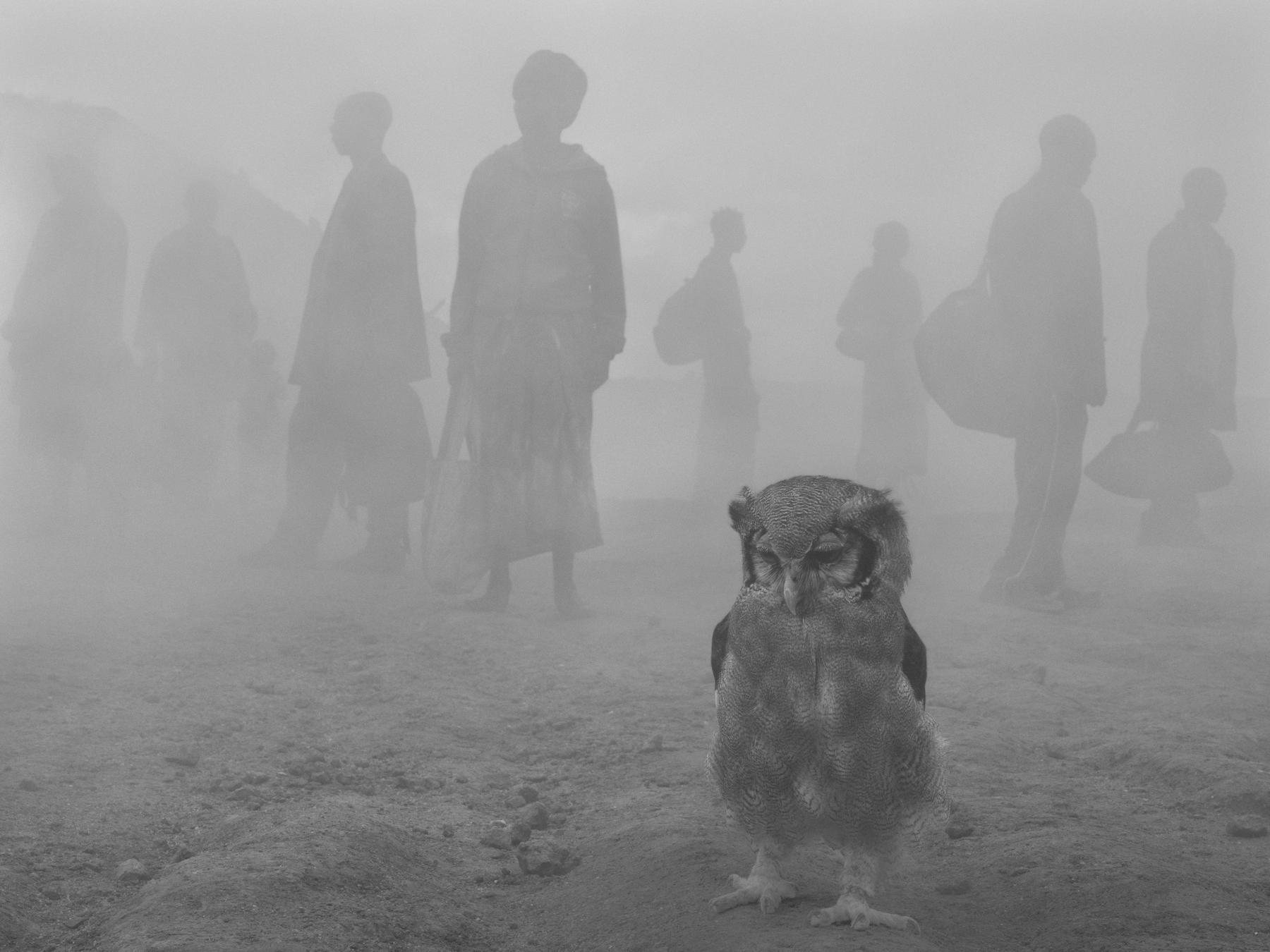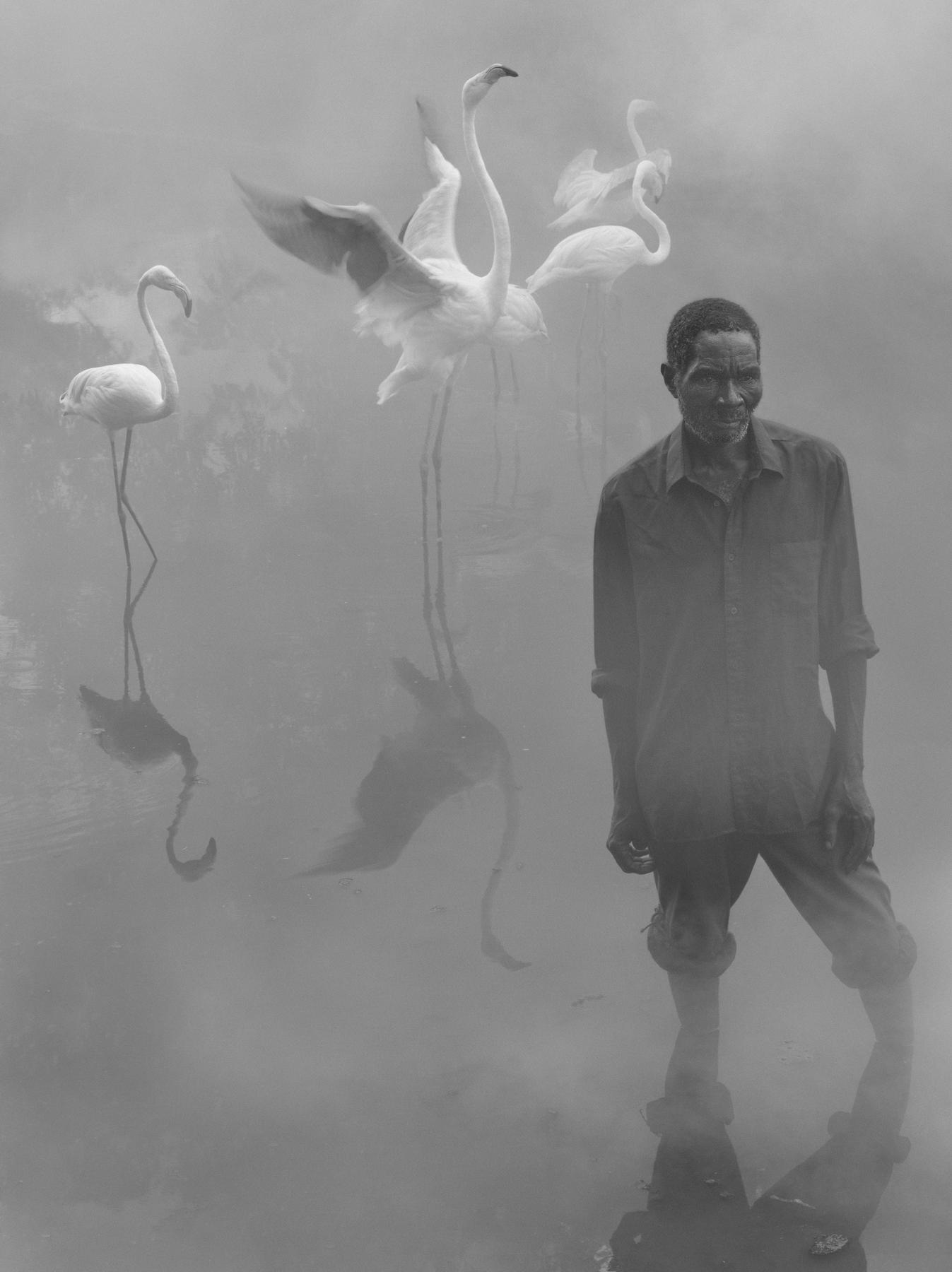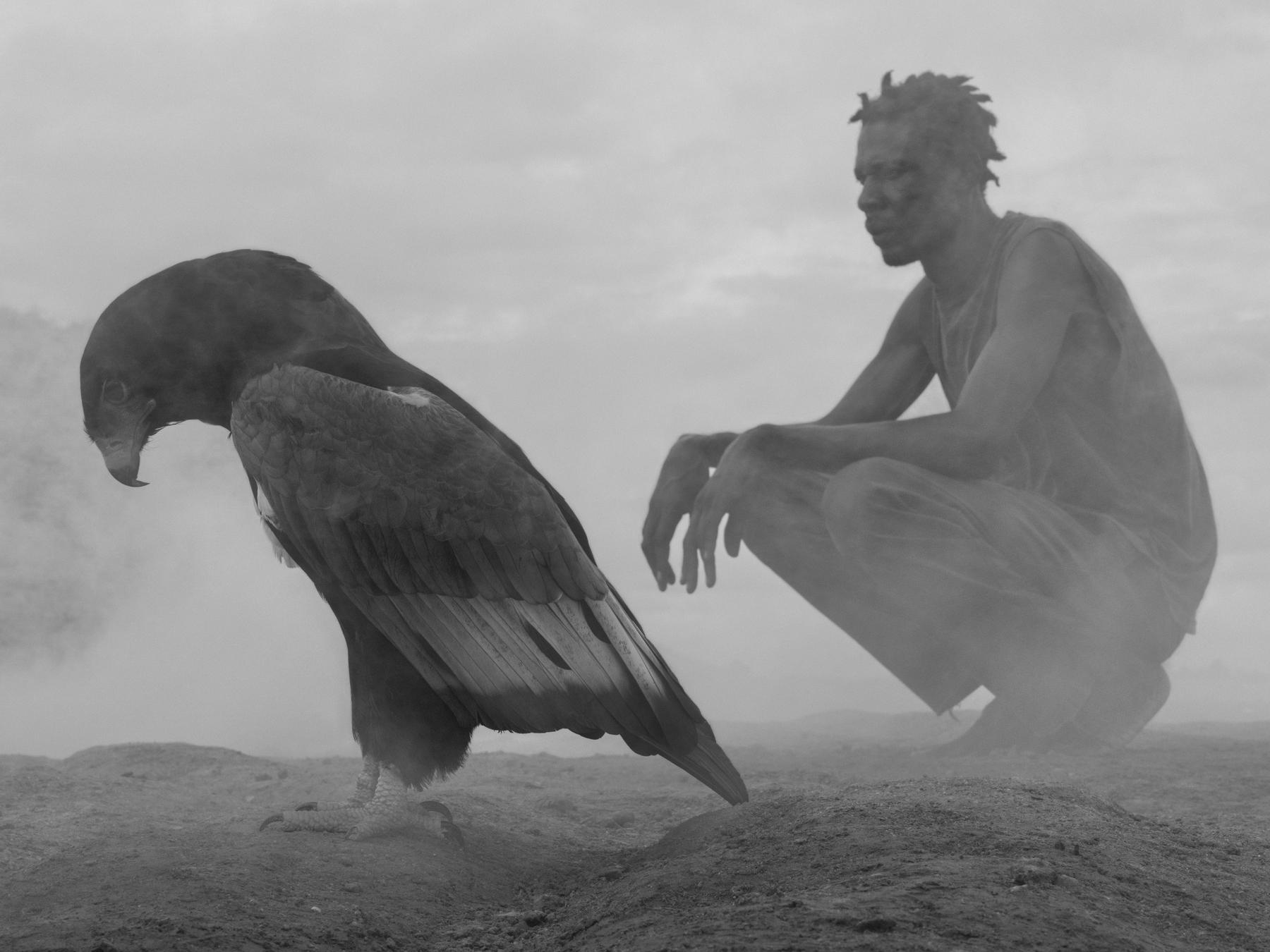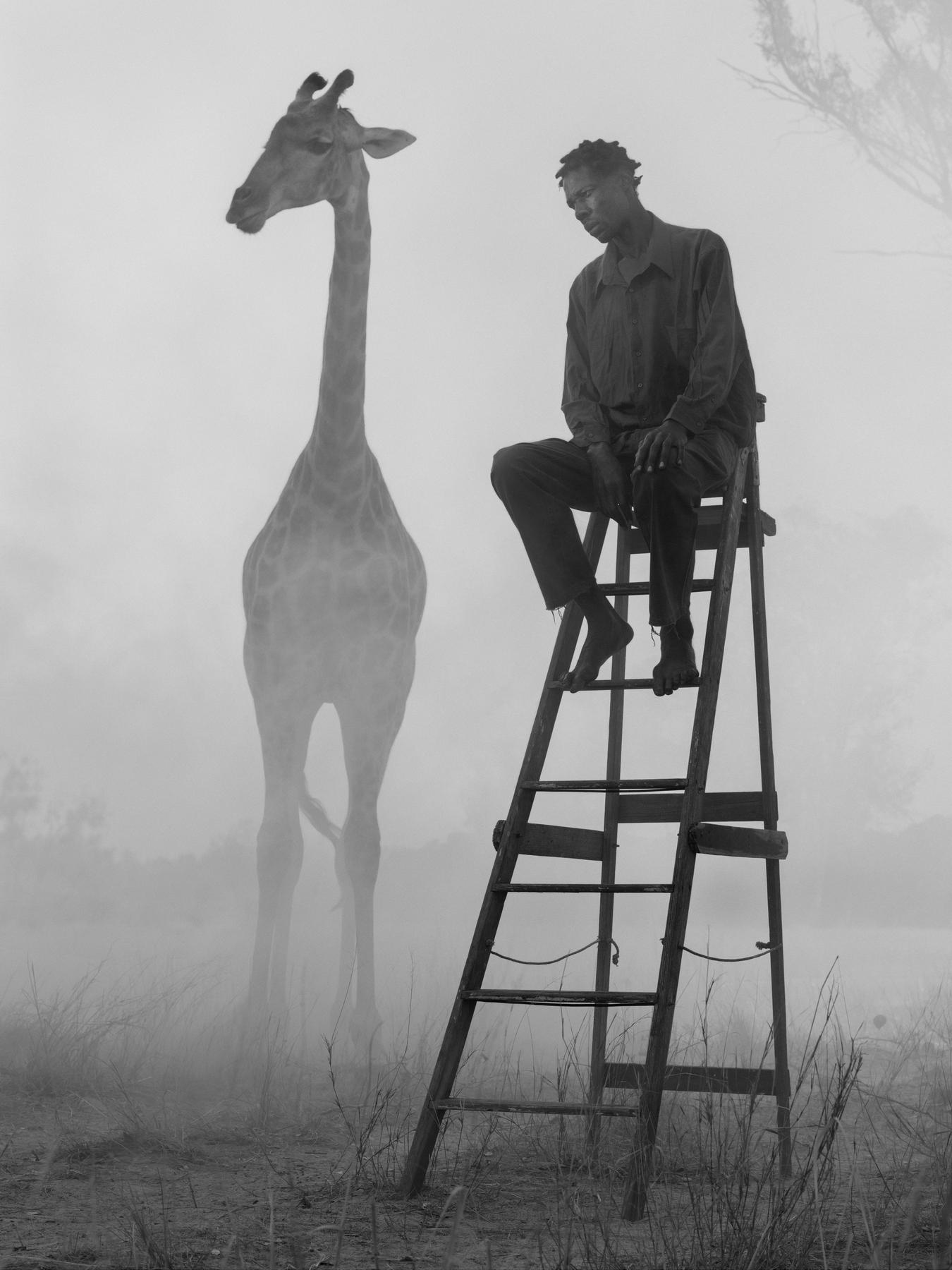Forests and woodlands cover more than half of Zimbabwe, holding a quarter million metric tons of irrecoverable carbon. These canopies and grasslands also provide habitat for zebra, antelope, black rhinoceros, cheetahs, elephants, hippopotamus and more.

“Irrecoverable carbon” refers to the vast stores of carbon in nature that are vulnerable to release from human activity and, if lost, could not be restored by 2050 — when the world must reach net-zero emissions to avoid the worst impacts of climate change. Learn more about this critical research.
These images were licensed from Nick Brandt’s series, The Day May Break, and were photographed at the animal sanctuaries Wild Is Life, Zimbabwe Elephant Sanctuary, Kuimba Shiri Bird Park and Imire Rhino & Wildlife Conservancy in 2020. Brandt captured the people and animals together in the same frame, using a fog machine to close the space between them. His interspecies subjects share common stories of displacement and suffering due to climate change and land degradation. For example, in one portrait, Richard, a maize farmer and cattle owner affected by drought, poses with Grace, a bateleur eagle orphaned by habitat destruction.
“I tried to direct the people as little as possible, to allow them to find a way of being comfortable in their own way,” Brandt wrote of his process. “Some of the most affecting expressions and postures were just how they chose to present themselves, from the moment they sat down. Occasionally, out of nowhere, the serendipitous momentary alignment of three elements — the people, the animals, and the constantly shifting layers of fog — would materialize into one distilled, balanced frame.”






